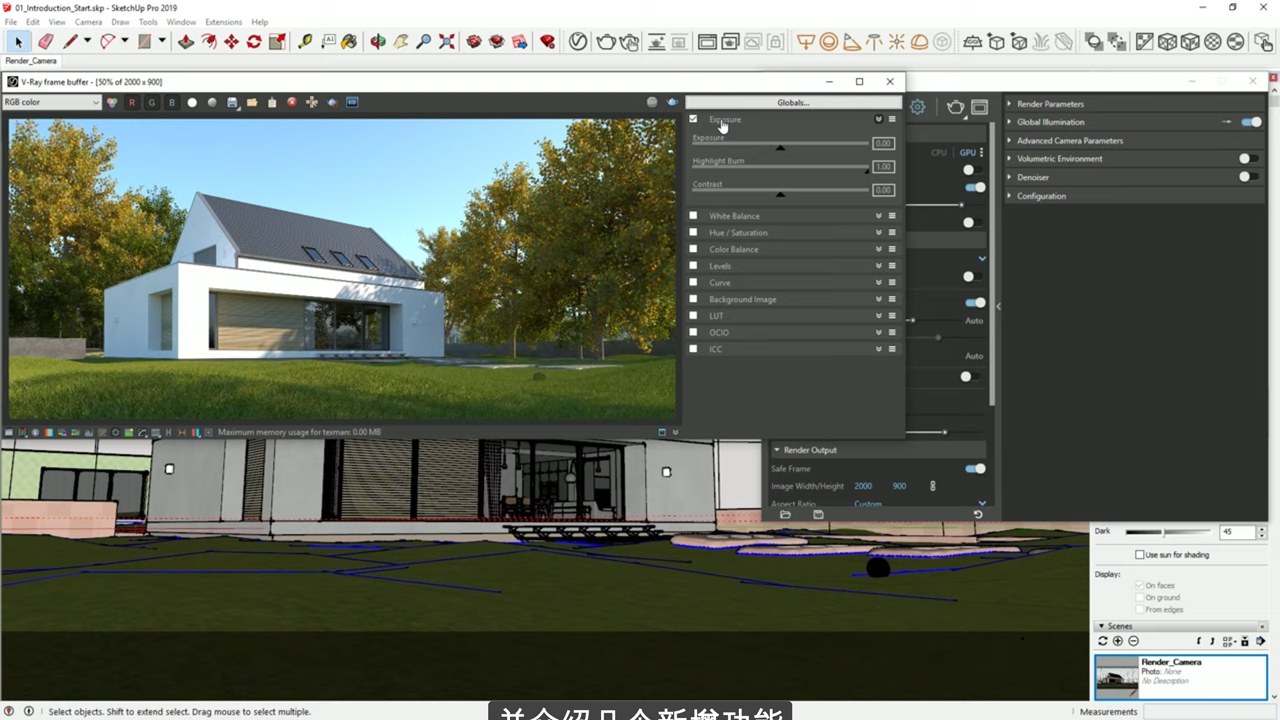

An integral rendering solution for SketchUp which enables. It doesn’t have to be the perfect angle from the first try you only need an approximate direction to point your camera. V-Ray 5 for SketchUp is the ultimate visualization solution for SketchUp artists and designers. Just keep in mind that as you continue to populate the model, you can change your mind about the angle and change it later. I stop when the angle starts looking natural, like it’s taken with a camera.įor a more in-depth tutorial on Camera Setup, check the links below. I usually start at 65 Degrees (which I just type into my keyboard) and work my way down to 45 Degrees.

To fix that I’ll click on the Magnifying Glass Icon and that displays the Field of View value in the bottom left corner of the window. In my Sketchup Workspace, the camera started looking weird because that aspect ratio just distorted my field of view. I want to render a narrow image of a corner, so I’ll go for a 4:5 Portrait Aspect Ratio. If we launch the asset editor, and navigate to the Render Output rollout, turn on the Safe Frame option and choose an Aspect Ratio that works for your scene, you’ll know what you’ll be looking at once you start rendering. So, naturally I want to angle my camera to view that corner, so I’ll start with the camera setup first. I’ve picked the corner I want to work on it’s kinda inspired by some Pinterest images I’ve seen on my feed. They always start out looking weird but everything comes together slowly to make a beautiful shot in the end. I’ve saved a random scene and even rendered it on default settings this is basically how we all start creating our interiors.

But if our textures have been offered correctly, perhaps in an application such as Substance Designer or Painter, then this option should only rarely need to be used.I’ve modeled the shell of a reading nook and didn’t do anything else to it other than apply the materials. We could apply a Custom Gamma Curve if we like in order to have artistic control over the gamma settings being used on an image. Whereas when using an image in a data channel, such as in the Bump, Normal, or Displacement slots on a material, then we will want to use the Rendering Space Linear option, which we will need to apply manually. The only significant pieces of information that we need to keep in mind here being that when working with images in the material editor that provide visible color information, such as in the Diffuse or Color slots on a material, then the Color Space dropdown in the Asset Editor will need to be set to use the Screen Space sRGB option, which is the default.

In V-Ray Next for SketchUp these days, inputting images for use in materials couldn't be simpler as the render engine now handles many Color Space requirements automatically, making things a whole lot easier for both newer and probably even more experienced users alike.


 0 kommentar(er)
0 kommentar(er)
